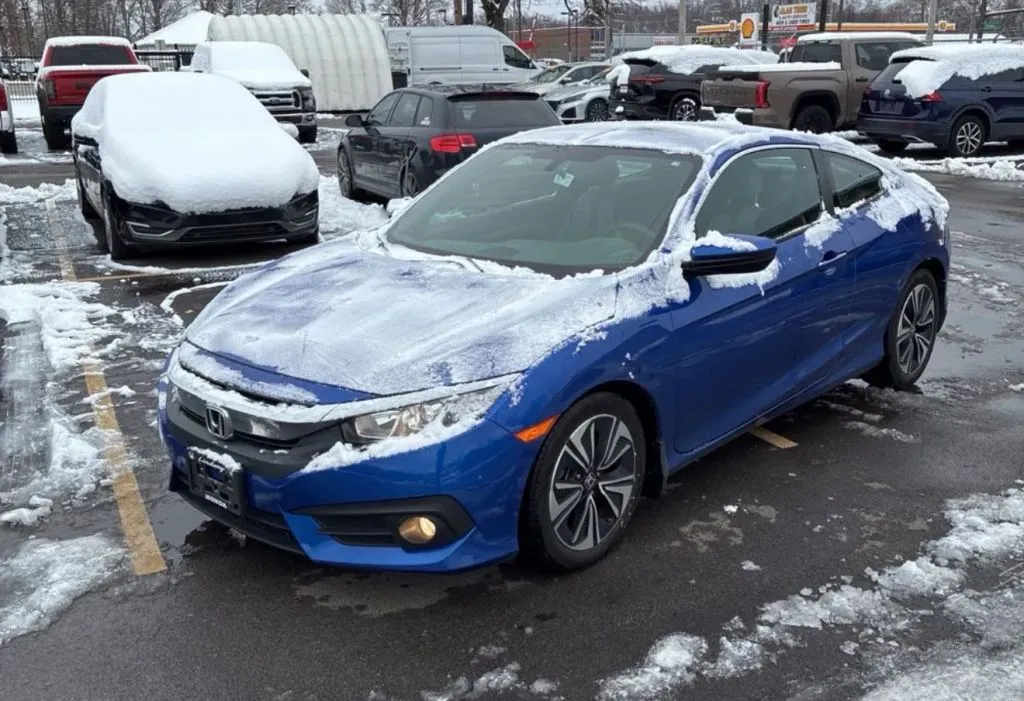Your Ultimate 2025 Maryland Vehicle Inspection Guide: Everything You Need to Know for a Hassle-Free Experience!
Table of Contents
- Overview of Maryland Vehicle Inspection Requirements
- Importance of Vehicle Inspections in Maryland
- Key Changes to Vehicle Inspection Regulations in 2025
- 1. Advanced Emissions Testing Procedures
- 2. Expansion of Digital Inspection Records
- 3. Stricter Safety Standards for Key Components
- How to Prepare Your Vehicle for Inspection
- Common Reasons for Vehicle Inspection Failures
- Faulty Brakes
- Malfunctioning Lights and Signals
- Emissions System Issues
- Understanding the Vehicle Inspection Process
- What to Do if Your Vehicle Fails Inspection
- Conclusion and Final Tips for a Smooth Inspection Experience

Navigating the vehicle inspection process in Maryland can often feel like a daunting task, but it doesn't have to be! Whether you're a new car owner or a seasoned driver, understanding the ins and outs of the 2025 Maryland vehicle inspection will help ensure a smooth experience. From knowing what to expect during the inspection to understanding common violations and essential tips for preparation, this ultimate guide is designed to equip you with all the information you need. Say goodbye to confusion and frustration as we break down each step in the vehicle inspection process. With our comprehensive insights, you'll not only save time but also prevent unnecessary surprises. Get ready to hit the road with confidence, knowing you’ve mastered the Maryland vehicle inspection landscape!
Overview of Maryland Vehicle Inspection Requirements

Maryland vehicle inspection requirements are designed to ensure that all vehicles on the road are safe and environmentally compliant. The state mandates that vehicles undergo a thorough inspection before they can be registered, sold, or renewed. This inspection covers various aspects of the vehicle, from emissions and safety features to structural integrity. Understanding these requirements is crucial for every vehicle owner, as it helps in maintaining the vehicle in optimal condition and avoiding any legal issues. Many drivers also confuse state testing with a general car safety inspection, but each has distinct goals.
The inspection process includes checks on brakes, tires, lights, steering, suspension, and other critical components. Emissions testing is also a significant part of the inspection, ensuring that vehicles meet the state’s environmental standards. Maryland’s regulations are stringent, and failing to comply can result in penalties or denial of registration. Therefore, being aware of what is expected during an inspection can save you time, money, and hassle.
Maryland has specific guidelines for different types of vehicles, including passenger cars, trucks, motorcycles, and commercial vehicles. Each category has tailored inspection criteria that address the unique safety and operational needs of that vehicle type. Knowing the specific requirements for your vehicle can make preparing for the inspection much simpler and more efficient.
Importance of Vehicle Inspections in Maryland

Vehicle inspections play a critical role in ensuring road safety and environmental protection in Maryland. By mandating regular inspections, the state aims to reduce the number of accidents caused by vehicle malfunctions and to minimize the environmental impact of vehicular emissions. Inspections help identify potential issues before they become serious problems, allowing for timely repairs and maintenance.
Safety is the primary concern of vehicle inspections. Ensuring that brakes, lights, tires, and other vital components are functioning correctly can prevent accidents and save lives. Regular inspections also help in maintaining the vehicle’s reliability, ensuring that it performs as expected under various conditions. This not only enhances the driving experience but also contributes to the overall safety of Maryland’s roads. As outlined in Bamble Auto's vehicle inspection process, routine checks not only ensure safety but also extend the life of your car.
Environmental protection is another crucial aspect of vehicle inspections. Emissions testing is designed to reduce the amount of harmful pollutants released into the atmosphere. By ensuring that vehicles meet emission standards, Maryland is actively working towards cleaner air and a healthier environment. This is especially important in urban areas where vehicle emissions can significantly impact air quality.
Key Changes to Vehicle Inspection Regulations in 2025

In 2025, Maryland has implemented several important updates to its vehicle inspection regulations. These changes are designed to enhance environmental protection, improve road safety, and streamline inspection processes through digital advancements. Vehicle owners in Maryland should stay informed about these new rules to ensure compliance and avoid unexpected issues during inspections.
1. Advanced Emissions Testing Procedures
A major update in 2025 is the adoption of more sophisticated emissions testing methods. Maryland now utilizes advanced on-board diagnostics (OBD) to more accurately assess a vehicle’s emissions system. This technology reads data directly from the vehicle’s onboard computer, offering deeper insights into emissions performance. To pass these enhanced tests, vehicle owners must ensure that their emissions control systems are properly maintained and functioning efficiently.
2. Expansion of Digital Inspection Records
Another significant change is the digitization of inspection records. Maryland has moved toward an electronic system that stores inspection results online, making it easier for vehicle owners to retrieve their history and for inspection stations to operate more efficiently. This update not only enhances convenience and transparency but also contributes to environmental efforts by reducing the need for printed documents.
3. Stricter Safety Standards for Key Components
In 2025, Maryland has also raised the bar for vehicle safety inspections. The updated regulations include more rigorous evaluations of braking systems, tire conditions, and structural components such as the chassis. These enhanced safety standards aim to minimize the risk of mechanical failures on the road and ensure that all vehicles meet higher thresholds for safe operation. One important area to monitor is your used car's engine health, especially before testing key safety components. Regular maintenance of these systems is now more critical than ever for passing inspection.
How to Prepare Your Vehicle for Inspection

Preparing your vehicle for inspection is a crucial step in ensuring a hassle-free experience. By taking the time to check your vehicle’s condition and address any potential issues, you can increase the likelihood of passing the inspection on the first try. Here are some essential tips to help you get your vehicle ready for inspection.
Start by conducting a thorough self-inspection. Check all the basic safety features, such as lights, brakes, tires, and mirrors. Ensure that these components are functioning correctly and meet the required standards. It’s also a good idea to check the condition of your windshield wipers and washer fluid, as these are often overlooked but can be critical during an inspection.
Next, pay attention to your vehicle’s emissions system. Maryland’s updated regulations place a significant emphasis on emissions testing, so it’s important to ensure that your vehicle’s emissions control system is in good working order. This includes checking the exhaust system for leaks and ensuring that the catalytic converter is functioning correctly. If you notice any issues, it’s best to address them before the inspection. Be sure to follow tips and tricks for car oil changing to avoid issues that may surface during inspection.
Finally, consider taking your vehicle to a trusted mechanic for a professional inspection. A mechanic can provide a more detailed assessment of your vehicle’s condition and identify any issues that may not be apparent during a self-inspection. They can also perform necessary repairs and maintenance to ensure that your vehicle meets all the inspection requirements.
Common Reasons for Vehicle Inspection Failures

Failing a vehicle inspection can be inconvenient and expensive, but many of the most common reasons for failure are preventable with routine maintenance. Understanding what typically causes inspection failures in Maryland can help you prepare your vehicle and avoid unnecessary setbacks. Below are the top issues that often lead to failed inspections.
Faulty Brakes
Brake system problems are one of the leading causes of inspection failures. Worn brake pads, damaged rotors, or leaking brake fluid can all compromise vehicle safety and result in an automatic failure. Because brakes are essential for safe driving, Maryland inspection standards are strict in this area. Among the major tips to maintain your car, consistent brake maintenance ranks at the top. Regularly servicing your braking system and addressing any unusual sounds or sensations while braking can help ensure your vehicle passes inspection.
Malfunctioning Lights and Signals
Non-functioning lights are another common and easily preventable issue. This includes headlights, brake lights, turn signals, and taillights. Inspectors will check to ensure all lighting components are working properly, and any broken or burnt-out bulbs will lead to a failed inspection. A quick walk-around of your vehicle to test all lights before your appointment can save you time and frustration.
Emissions System Issues
Problems with a vehicle’s emissions system can also cause inspection failures, particularly given Maryland’s strict environmental standards. Components such as the catalytic converter, oxygen sensors, and the exhaust system must be in good working order. If your vehicle has a check engine light on or has recently failed an emissions test, it’s essential to address these issues with a mechanic before the inspection.
Understanding the Vehicle Inspection Process

Understanding the vehicle inspection process can help alleviate some of the anxiety associated with it and ensure that you’re fully prepared. The inspection process in Maryland is designed to be thorough and comprehensive, covering all aspects of vehicle safety and emissions. Here’s a detailed look at what you can expect during the inspection.
The inspection begins with a visual check of the vehicle’s exterior and interior. Inspectors will look for any visible signs of damage or wear that could affect the vehicle’s safety. This includes checking the condition of the body, windows, mirrors, and lights. Any visible issues will need to be addressed before the vehicle can pass the inspection.
The inspector will conduct a series of functional tests. This includes checking the brakes, steering, suspension, and other critical components. The inspector will also test the vehicle’s lights, signals, and other safety features to ensure they are functioning correctly. These tests are designed to identify any potential issues that could compromise the vehicle’s safety.
The inspection will include also an emissions test. This involves using specialized equipment to measure the vehicle’s emissions and ensure they meet the state’s standards. The emissions test is a crucial part of the inspection, as Maryland places a significant emphasis on environmental protection. Any issues with the emissions control system will need to be addressed before the vehicle can pass the inspection.
What to Do if Your Vehicle Fails Inspection

Failing a vehicle inspection can be disappointing, but it’s important to know what steps to take if it happens. Maryland provides clear guidelines for what to do if your vehicle fails inspection, and taking the right actions can help you address the issues and pass the re-inspection. Here’s what you need to do if your vehicle fails.
First, review the inspection report provided by the inspector. This report will detail the specific reasons for the failure and outline the issues that need to be addressed. Understanding these issues is the first step in making the necessary repairs and improvements.
Next, take your vehicle to a trusted mechanic or repair shop to address the identified issues. The mechanic can provide a detailed assessment of the problems and perform the necessary repairs to bring your vehicle up to the required standards. It’s important to ensure that all issues are thoroughly addressed to avoid failing the re-inspection.
Once the repairs are completed, schedule a re-inspection at a licensed inspection station. Maryland allows for re-inspections within a certain timeframe, typically within 30 days of the initial inspection. During the re-inspection, the inspector will check the previously identified issues to ensure they have been properly addressed. If everything is in order, your vehicle will pass the inspection, and you can proceed with registration or renewal.
Conclusion and Final Tips for a Smooth Inspection Experience
Navigating the vehicle inspection process in Maryland doesn’t have to be a daunting task. With the right preparation and understanding, you can ensure a smooth and hassle-free experience. Here are some final tips to help you master the Maryland vehicle inspection landscape.
Regular maintenance is key to passing vehicle inspections. Keeping your vehicle in good condition by performing routine checks and addressing any issues promptly can help you avoid common inspection failures. This includes checking brakes, lights, tires, and emissions systems regularly.
Being aware of the latest regulations and requirements is also crucial. Maryland’s vehicle inspection standards are updated periodically, and staying informed about these changes can help you prepare more effectively. This includes understanding the new emissions testing procedures and safety standards introduced in 2025.
Choosing a reputable inspection station and working with a trusted mechanic can make a significant difference. A good inspection station will provide reliable and efficient services, while a skilled mechanic can help you address any issues and ensure your vehicle meets all the required standards. With these tips in mind, you’ll be well-equipped to navigate the Maryland vehicle inspection process with confidence.








